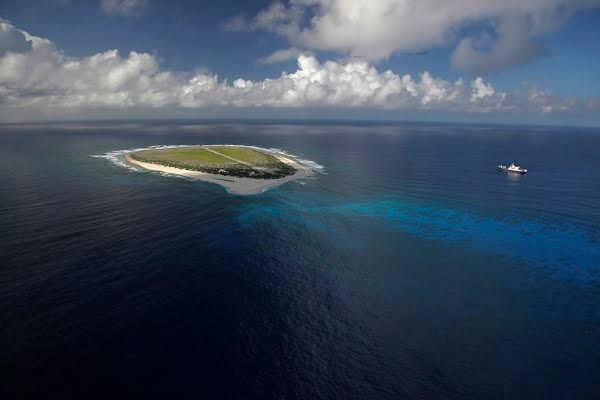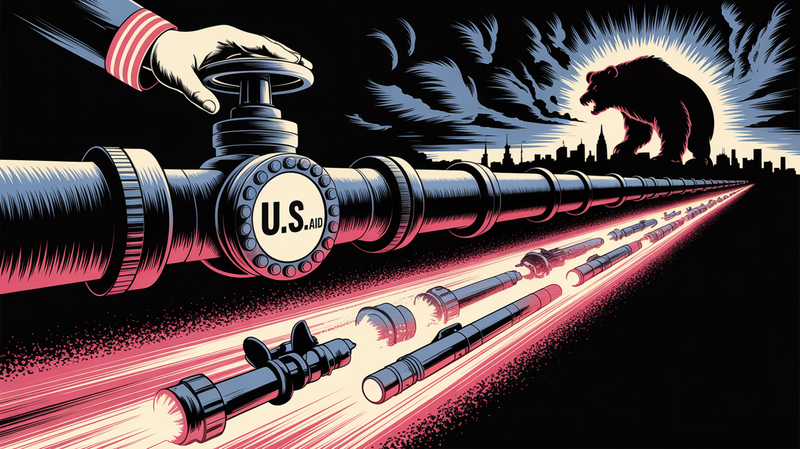The Tragedy of Tromelin Island: A Tale of French Slavery and Survival against the Odds
The annals of human history are punctuated with tales of great heroism and profound sorrow, but few stories have captured the grim essence of humanity's inhumanity, and the indomitable spirit of survival, as poignantly as the tragedy of Tromelin Island. A Stage Set by French Slavery To comprehend

The annals of human history are punctuated with tales of great heroism and profound sorrow, but few stories have captured the grim essence of humanity's inhumanity, and the indomitable spirit of survival, as poignantly as the tragedy of Tromelin Island.
A Stage Set by French Slavery
To comprehend the magnitude of this tragedy, one must first understand the colossal beast that was the French slave trade in the 18th century. As the world transitioned into the Age of Enlightenment, the French, paradoxically, were plunged into one of the darkest eras of their history - the epoch of mass slavery. The sugarcane, coffee, and cotton plantations in their colonies in the Americas and the Caribbean demanded an inexhaustible supply of labour. This insatiable demand was met with an abominable solution: the trafficking of human lives from the shores of Africa. The French East India Company, or "Compagnie des Indes", stood as one of the pivotal players in this nefarious trade.
Shipwreck on the Sands of Sorrow
The year 1761 witnessed one of the most heartrending episodes of the French slave trade. The ship "L'Utile", under the aegis of the French East India Company, was sailing from Madagascar to the French colony of Isle de France (modern-day Mauritius) with around 160 enslaved individuals on board. Unbeknownst to them, their journey would abruptly end near a tiny, insignificant coral island in the Indian Ocean – Tromelin Island.
On July 28, "L'Utile" was wrecked, and its human cargo, reduced to about 80 survivors, were marooned on the barren speck of land. The French crew hastily cobbled together a makeshift raft and absconded, promising to return for the enslaved. But the beacon of their promise proved to be a false dawn as they were promptly forgotten upon reaching home shores.
An Odyssey of Survival
Left to the whims of fate on the cruel sands of Tromelin, the enslaved were condemned to a life teetering on the brink of existence. Yet, they defied the odds. Armed with an unyielding spirit and the raw instinct to survive, they endured starvation, thirst, diseases, and the wrath of the elements. They eked out a living from the limited resources of the island, feasting on sea birds, turtles, and fish.
Their emancipation, however, didn't arrive until 1776, a staggering 15 years later, when a French ship under the command of Jacques Marie Boudin de Tromelin stumbled upon the island. Only seven women and an eight-month-old child were found – the final survivors of a forgotten chapter of the French slave trade.
A Tale Remembered
The saga of Tromelin Island, though shrouded in the fog of obscurity, resonates with the echoes of a gruesome past and the unquenchable spirit of human survival. It recounts the tales often lost in the grand narrative of the slave trade – the stories of the enslaved, their struggle for survival, and their obliterated lives. These forgotten souls of Tromelin Island stand as a grim reminder not only of France's but the whole of Europe's colonial past, reflecting the horrifying legacy of the Atlantic slave trade.
The Silence of Atonement: The Unspoken Apologies for Slavery
In the aftermath of the historical atrocities such as the Holocaust, the world has seen collective remorse and public apologies. Yet, when it comes to the transatlantic slave trade, a crime against humanity of similar magnitude, the landscape of apology is starkly barren. This disquieting silence from former colonial powers, including France, is a glaring contrast to the immense human suffering that the trade inflicted.
The transatlantic slave trade was a wholesale dehumanization of millions, a chapter of history that left deep scars on the face of humanity. The repercussions of this brutal system echo still today, in the form of racial discrimination and economic disparities that people of African descent continue to grapple with.
Nevertheless, the nations that were once the orchestrators of this brutal trade in human lives have been reticent in offering formal apologies. The reasons for this are multifold. The complexities of politics, the fear of reparations, the distancing of present generations from past sins, and the thorny issue of determining responsibility are all factors that have contributed to this silence.
France, a leading slave-trading nation in the 18th century, has grappled with its dark past. In 2001, the French Parliament passed the Taubira Law recognizing the transatlantic and Indian Ocean slave trade as a crime against humanity. But a formal apology for slavery from the French state is yet to be delivered.
This lack of apology symbolizes an unfinished journey towards acknowledging historical wrongs. Formal apologies are more than symbolic gestures. They are necessary steps in the healing process for those affected and serve as powerful reminders of the horrors humanity must strive never to repeat.
The story of the forgotten slaves of Tromelin Island, and countless others like it, underscores the urgency of this issue. As the descendants of the enslaved continue to bear the burdens of their ancestors' suffering, the world awaits the long-overdue apologies from the nations that orchestrated these inhumanities. It's a critical step towards reconciliation, healing, and ultimately, ensuring such atrocities remain locked firmly in the annals of history, never to be repeated.
From Humans to Commodities: Unmasking the Dehumanization in the Transatlantic Slave Trade
The phrase "massive dehumanization of millions of people" refers to a systematic and widespread process through which a large number of individuals are stripped of their basic human dignity, rights, and individuality. This process reduces these individuals to less than human, often categorizing them as objects or commodities, hence the term 'dehumanization'.
In the context of the transatlantic slave trade, dehumanization was a fundamental mechanism that allowed for the brutal treatment and commodification of African people. It was a multistep process, both physical and psychological, that began the moment individuals were captured in their native African societies and continued until their eventual sale in foreign lands.
Capture and Enslavement: The process of dehumanization began with violent capture and enslavement in Africa. Many individuals were kidnapped during wars or raids, while others were sold by local rulers and traders. This act of violent capture reduced free people to captives, breaking their social status and personal identities.
The Middle Passage: Enslaved Africans were then packed onto ships under horrific conditions for the notorious Middle Passage across the Atlantic. They were chained, often with little room to move, and subjected to unspeakable abuses. The ship's crew further dehumanized them through physical violence, sexual exploitation, and psychological torture.
Sale and Enforced Labor: Upon arrival in the Americas and the Caribbean, enslaved Africans were sold at auctions, like commodities. Their names were changed, they were forced to abandon their native languages and cultures, and any resistance was brutally suppressed. They were made to labor in fields, mines, and houses, and their bodies were considered the property of their owners, further stripping them of their humanity.
Legal and Social Frameworks: The legal and societal frameworks of the time reinforced this dehumanization. Enslaved people were considered property under the law and had no legal rights. Socially, they were viewed as inferior, based on pseudoscientific racial theories, and were excluded from education and any form of self-improvement.
This process of mass dehumanization enabled the functioning of the transatlantic slave trade. It justified in the minds of the oppressors the cruel and inhumane treatment of millions of African people, forming a significant part of the dark legacy of slavery that continues to have repercussions today.




